The 18th
Amendment
banned alcoholic drinks The page on the left shows the 18th Amendment to the Constitution. It banned the "manufacture, sale, or transportation" of alcohol in the U.S. for beverage (drinking) purposes. Alcohol has some other uses in medicine and industry, and those uses were still permitted. The 18th Amendment took effect in 1920. It was in effect for 13 years - a period of time called Prohibition. This nationwide ban on alcohol was considered a great victory by the many Americans who were part of the temperance movement. They had been trying for a long time to get laws passed that would reduce alcohol consumption or outlaw it altogether. People in the movement were especially concerned about the problems caused by excessive drinking, such as violence in the home. |
|
Many
people opposed the ban on alcohol
Many Americans considered saloons (bars) an enjoyable part of social life. They did not like the temperance movement or the new amendment. The photo below shows a saloon in New York City about six months before the banning of alcohol took effect. Notice that there are no women in the photo. Women almost never went into saloons before Prohibition began - that was considered unladylike. |

|
Illegal
saloons spread widely
In spite of Prohibition, alcohol did not disappear. Beer, wine, and "hard liquor" such as gin and whiskey were all smuggled and sold in speakeasies (illegal saloons) that could be found in any city. This restaurant in Washington, D.C., was operating at night as a speakeasy. During a police raid in 1923, barrels of beer were pulled up from the basement. |
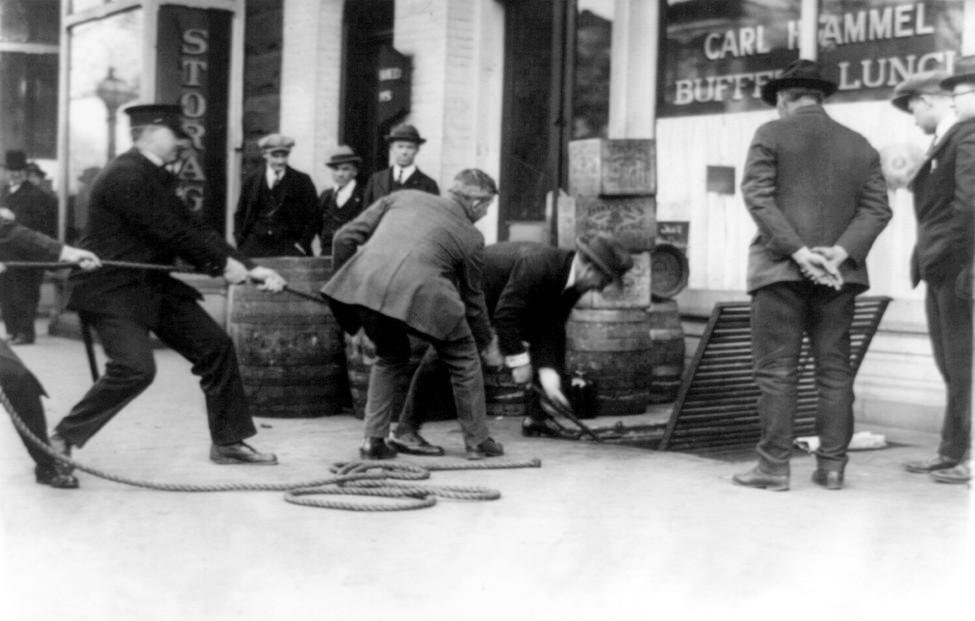
|
Making
whiskey during Prohibition
This photo shows the result of a raid by federal agents on a building in Washington, D.C., in 1922. The large item in the middle is called a still, and was used to make illegal whiskey. In some cities the local police were bribed to "look the other way" and ignore violations of the law. That's why federal agents often conducted their own raids. |
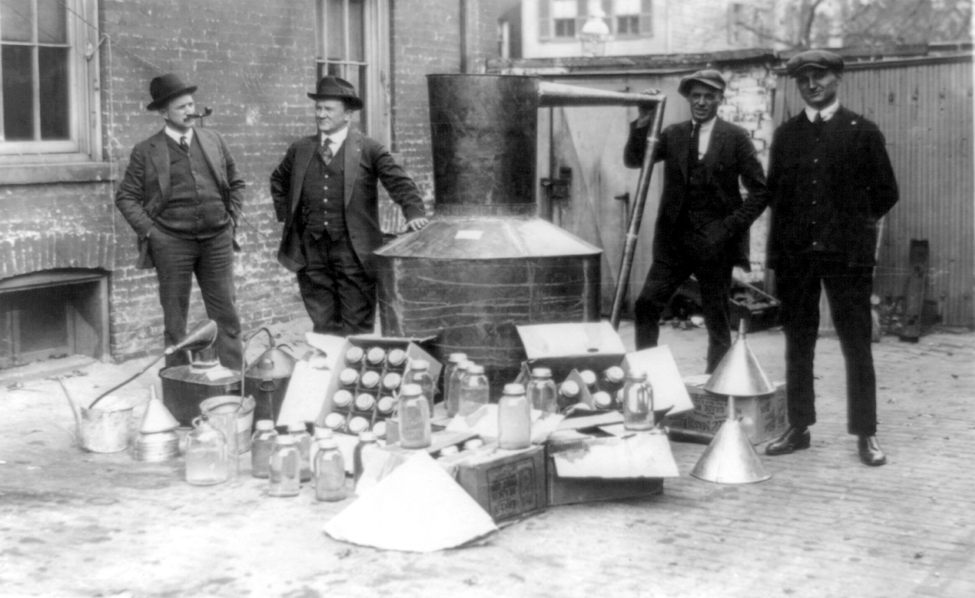
|
Bootleggers
kept the alcohol flowing
Smugglers called bootleggers carried illegal alcohol to the speakeasies. When this car crashed, police discovered it was carrying boxes packed with bottles of booze. The driver ran away before the police officer arrived. |
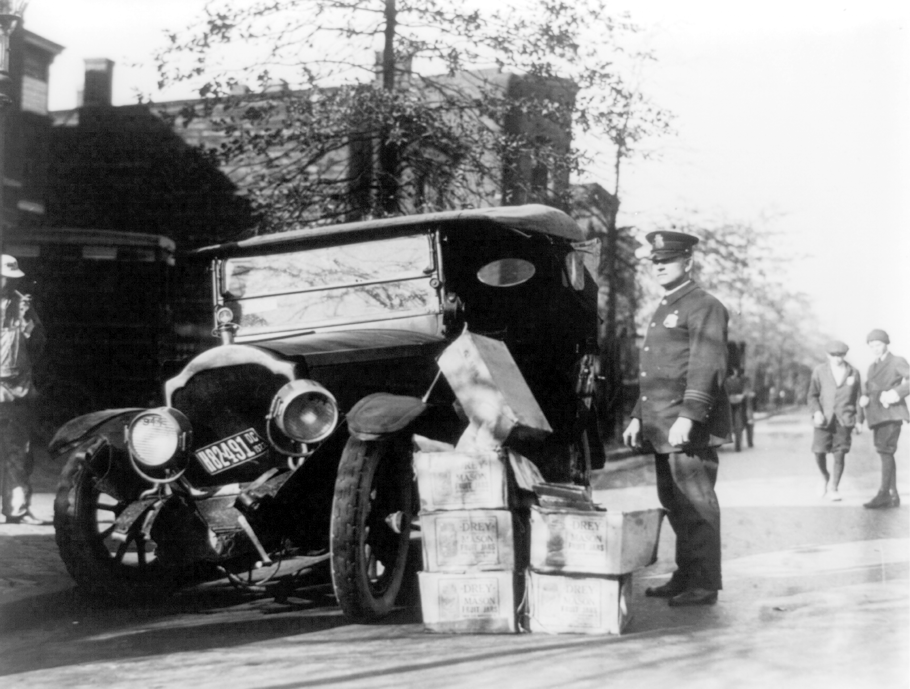
|
Why were
they called "bootleggers"?
These photos from 1922 shows how the term "bootlegger" originated. One effect of Prohibition was that women often went with their husbands or boyfriends into the illegal speakeasies. Saloons were no longer just places for men. For the first time, the problems associated with alcohol and drunkenness began spreading to women. |
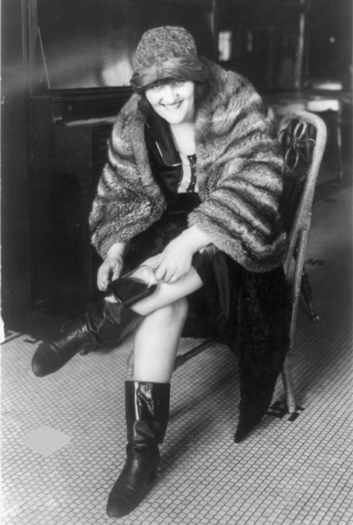 |
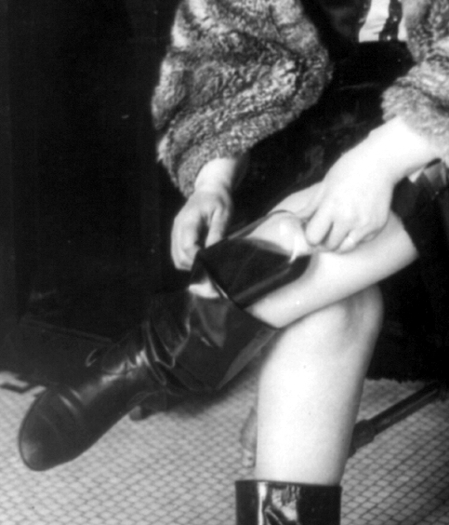 |
|
The rise
of organized crime
Prohibition led to the rise of organized crime in many big cities. Al Capone, shown in these police mug shots, became leader of a brutal gang of bootleggers in Chicago. Capone wanted to control the alcohol smuggling in that city. He bribed city officials and had his gang members murder any rivals who threatened his operations. Capone was convicted of tax evasion and spent most of the 1930s in prison. |

|
Dumping
the beer into the sewer
This raid on a speakeasy in New York City found barrels of beer ready for thirsty customers. Police officials posed for a newspaper picture as the beer was dumped into the city sewer system. Often speakeasies were open for business again - and serving illegal alcohol - within days of a raid. |
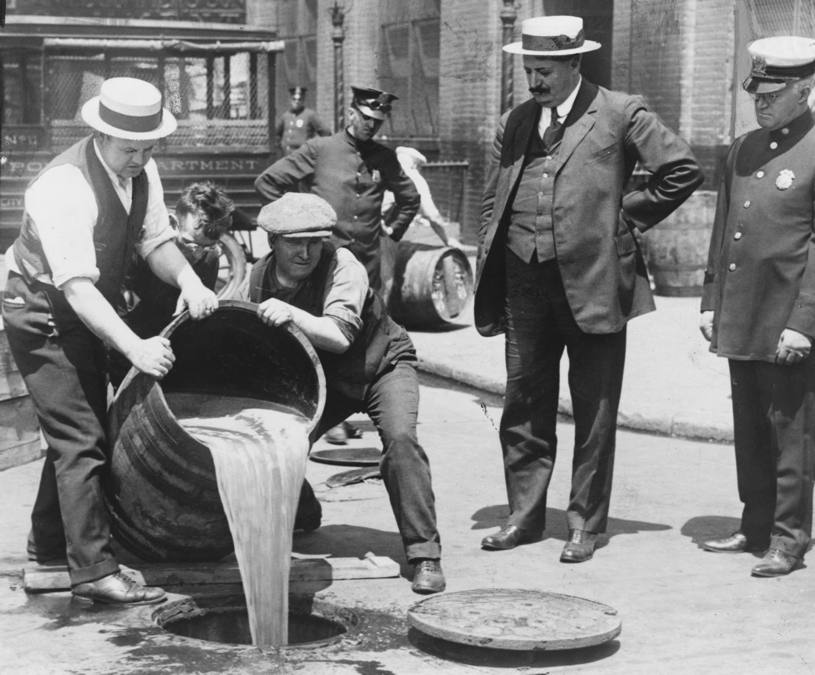
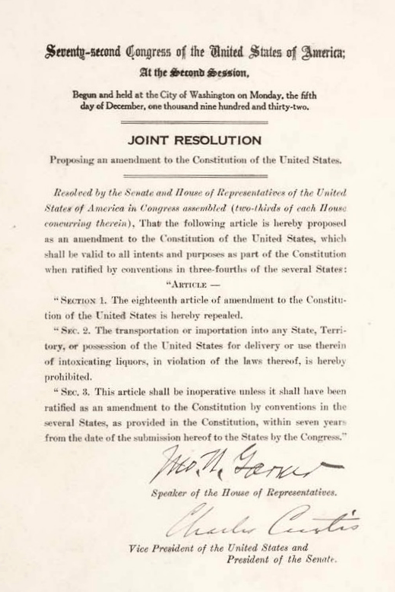 |
The 21st
Amendment
ended Prohibition By the early 1930s many Americans were speaking out for an end to Prohibition. Many people had become convinced that Prohibition was creating more problems than it solved. The 18th Amendment was so widely ignored that it became almost a joke. It was obvious that the attempt to legislate how people behaved was - at least in the case of drinking alcohol - a complete failure. A new amendment, the 21st, was written and approved to repeal (take away) the 18th Amendment. The 21st Amendment took effect nationwide in 1933. Alcoholic drinks returned to restaurants and saloons. Many states, however, passed laws placing some restrictions such as age limits on alcohol use. |
Photos are from the Library of Congress.
Images of the Amendments are from the National Archives.
Some images have been edited or resized for this page.
|
Copyright Notice
Copyright 2010, 2016 by David Burns. All rights reserved. As a guide to the Virginia Standards of Learning, some pages necessarily include phrases or sentences from that document, which is available online from the Virginia Department of Education. The author's copyright extends to the original text and graphics, unique design and layout, and related material. |